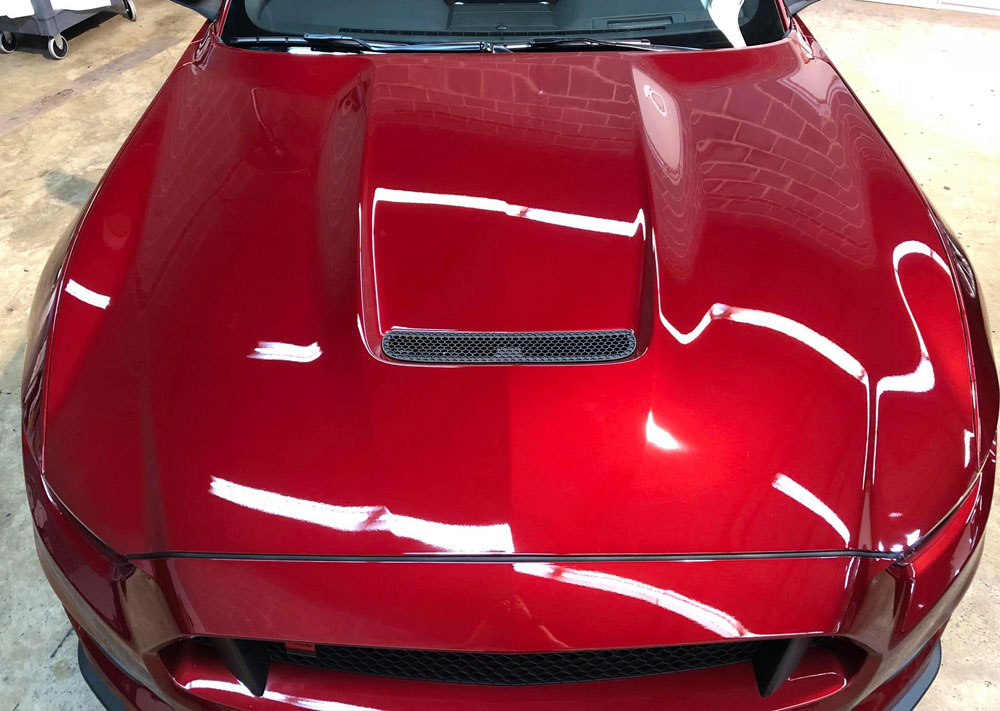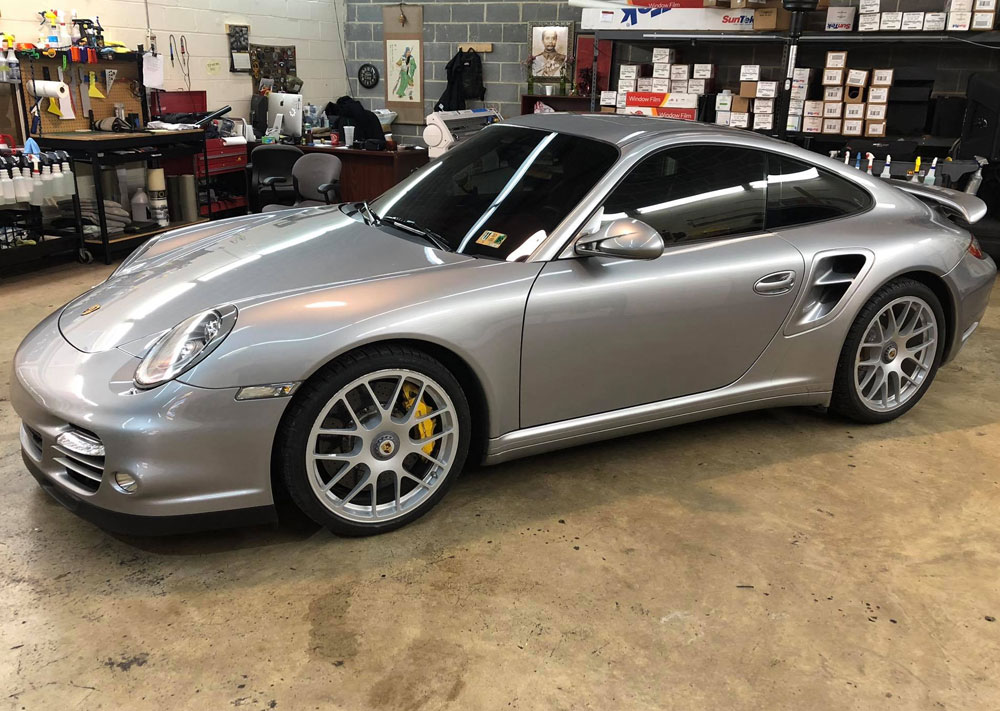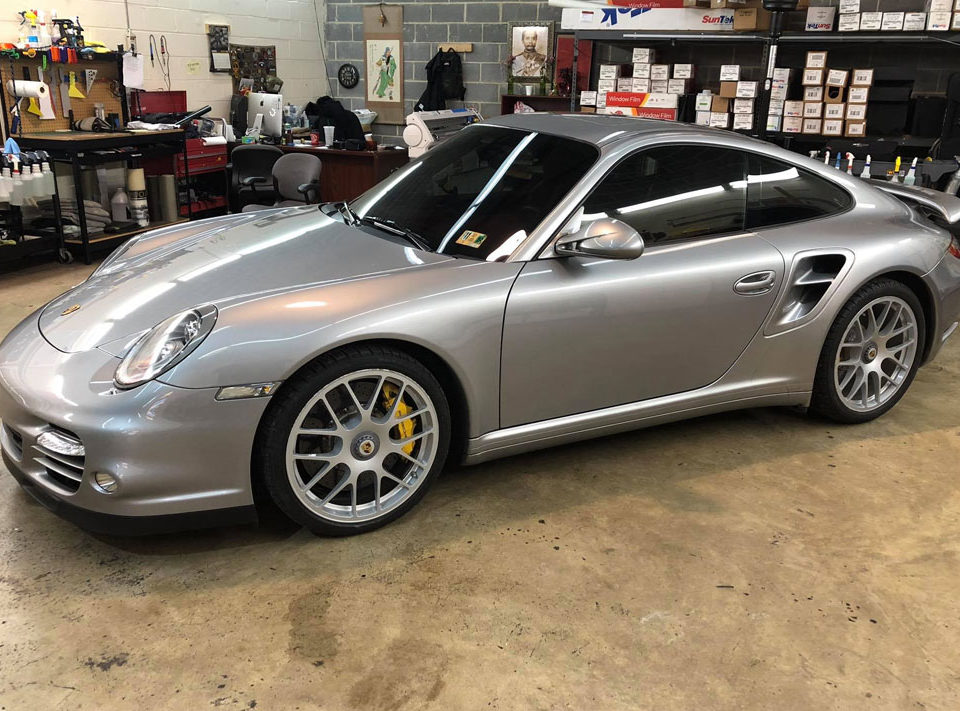
Car Window Tinting Guide
October 24, 2024
Car Window Tinting: Things you Should Know
November 23, 2024When it comes to improving the functionality and protection of your car, automotive professionals strongly advocate car window tinting. These come in a variety of darkness levels, which are assessed by the Visual Light Transmission (VLT) percentage. Choosing between two tint levels can be a difficult decision. For example, you might find yourself asking, is 20% or 35% tint darker?
Here is a comparison of 35% and 20% window tint to help you understand the differences and determine which one is best for you.
In general, you are better off with 35 percent VLT window tint instead of 20 percent. This is because the latter is darker in comparison, which reduces visibility in low-light settings and may not be a suitable option for your car.
What is 35% tint?
When you choose 35% window tint, only 35% of the light can enter through the window, leaving the remaining 65% obstructed. As a result, your vehicle’s windows will appear darker, offering a sense of privacy.
While this is the case, it is worth noting that a 35% tint allows for relatively good visibility during the day. This is because it falls into the medium darkness category, between the lowest option of 5% (very dark) and the maximum option of 70% (nearly transparent).
While it provides reasonable privacy during the day, visibility through 35% tinted windows is significantly reduced at night. This element appeals to certain people, but some may have different preferences for nighttime visibility.
Benefits of 35% tint windows
There are several advantages to adding 35 percent window tint to your vehicle. These advantages include:
Car protection: 35% of tinted windows block a considerable percentage of damaging UV rays, providing a protective barrier for both you and the interior of your car. This helps to prevent skin harm from the sun, as well as fading or deterioration of your interior upholstery and dashboard.
Temperature Control: The tint significantly minimizes the quantity of heat entering your vehicle. Shielding a significant fraction of solar energy keeps the inside cooler, resulting in a more comfortable driving experience, especially in hot areas.
Increased privacy: Choosing 35% tinted windows offers a level of privacy to your car. The darker aspect of the windows makes it more difficult for others to see inside, discouraging potential theft by keeping your valuables out of sight.
Legal compliance: 35% tint usually follows the laws and regulations that regulate window tint percentages in most states. This means that you can enjoy the benefits of tinted windows while adhering to regulatory rules.
Disadvantages of 35% tint
Limited Nighttime Privacy: While 35% of tinted windows provide privacy during the day, they may still allow for relatively easy viewing inside the vehicle at night.
This can jeopardize privacy and security, particularly in brightly illuminated places or when the vehicle is parked. If you turn on the lights inside the automobile, you can see perfectly through the tinted windows.
Cost: A 35% window tint can be a hefty investment, especially if you choose the highest quality ceramic one. The ultimate price is determined by a number of factors, such as the size of your vehicle, the quality of the tint film, and the labor required for installation. Before choosing this tint %, make sure to consider your budget.
What is 20% tint?
20% window tint allows just 20% of light to flow through while blocking 80% of it. This results in a substantially darker appearance than a 35% tint, as less sunlight is permitted inside the vehicle.
It’s crucial to know that 20% tint is prohibited in many areas in the United States, and you could get in trouble with law enforcement if you install it on your vehicle’s front windows.
The primary reason for this restriction is the possible threat it poses to visibility. The darker tint can impair the driver’s ability to see clearly, particularly at night or in low-light settings.
While this is the case, you should note that certain states may allow a vehicle’s back windows and rear windshield to be tinted at 20%. These regions are thought to provide a lower risk to the driver’s visibility than the front passenger seat and driver’s window.
Pros of 20% windows
20% window tinting increases privacy in your vehicle, making it more difficult for others to see inside.
The darker appearance of the 20% tint gives your vehicle a sleek and sophisticated look.
In some areas, such as those that allow tinted back windows and windshields, you may still be able to get the benefits of 20% tint on some windows.
The deeper color of the 20% tint makes it more difficult for outsiders to see into your vehicle at night, providing an additional degree of privacy and security.
Cons of 20% tint
Most states consider 20% tint illegal because it reduces visibility and poses a safety concern to drivers.
The darker tint might reduce the driver’s sight, especially in low light or at night, increasing the risk of accidents or troubleseeing road hazards.
While some people prefer the look of a darker window tint, it’s crucial to realize that 20% tint can drastically reduce the amount of light that enters the car, potentially lowering overall brightness and visibility.
Which tint is legal, 20% or 35%?
The legality of window tint percentages varies by state and location in the United States. While precise rules vary, it is critical to follow local restrictions. You should note that failure to do so may result in a fine or be asked to remove the window tint.
To stay on the safe side, you should research the tint regulations in your area and ensure that you follow the rules.
When it comes to the installation, don’t let anyone install the tint for you. Instead, you should ensure that the installation is done in a reputable auto tint shop Springfield. This way, you are sure that your tint will be professionally installed, which increases the chances of it lasting for a long time.
The professional shops also know the right tints to install for the area, so they won’t install a tint that you will have to remove after a few days or months because it doesn’t comply with the laws.


